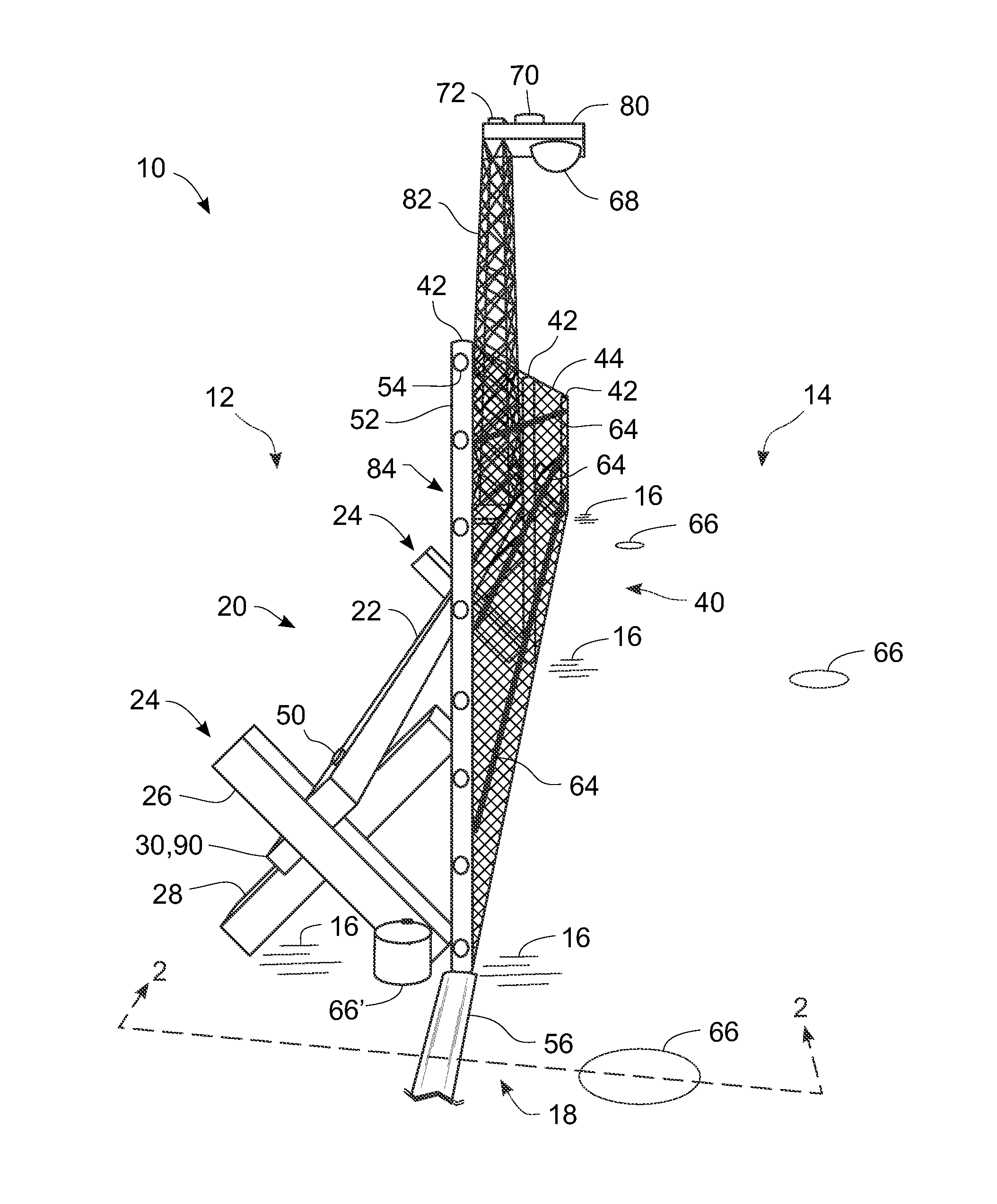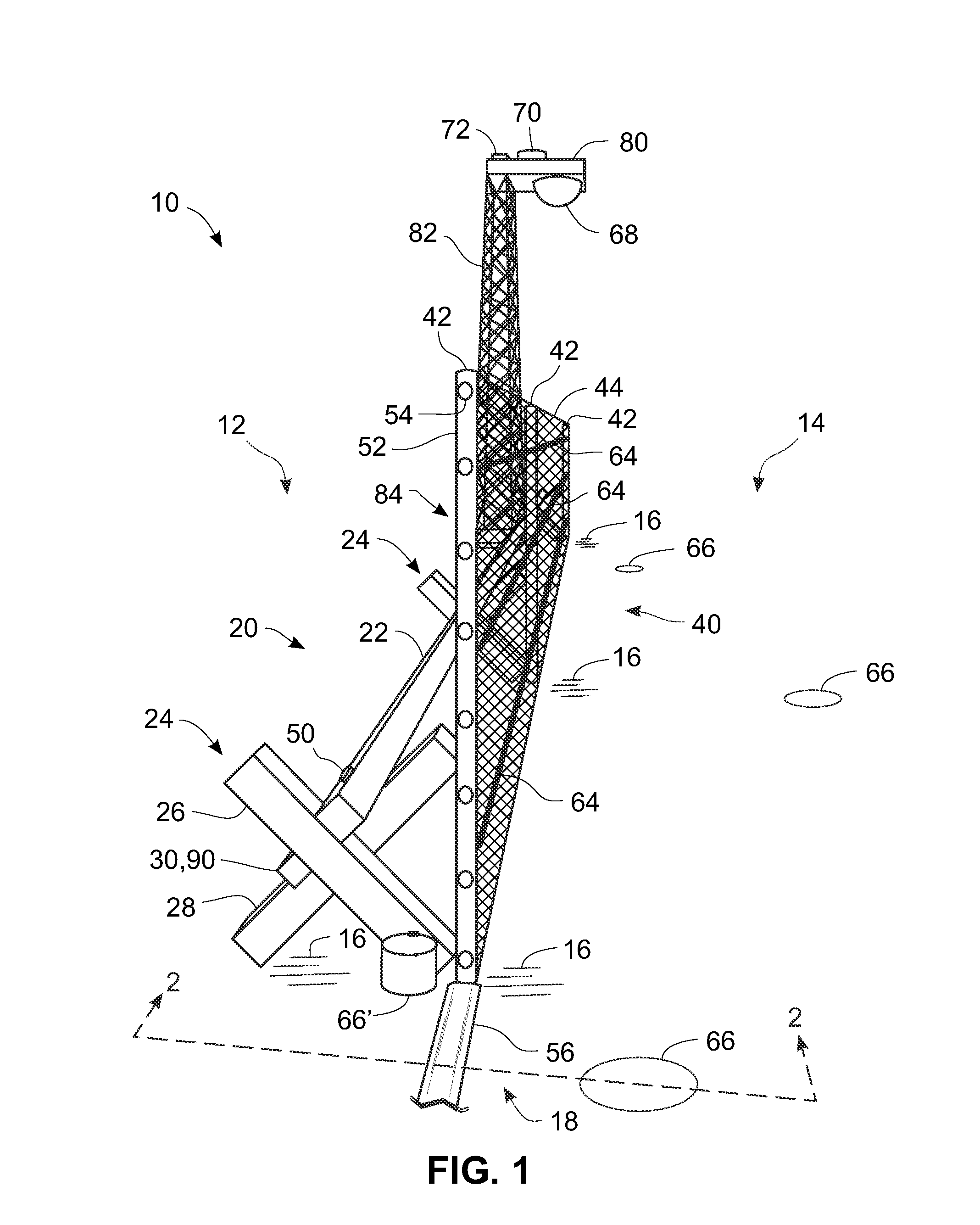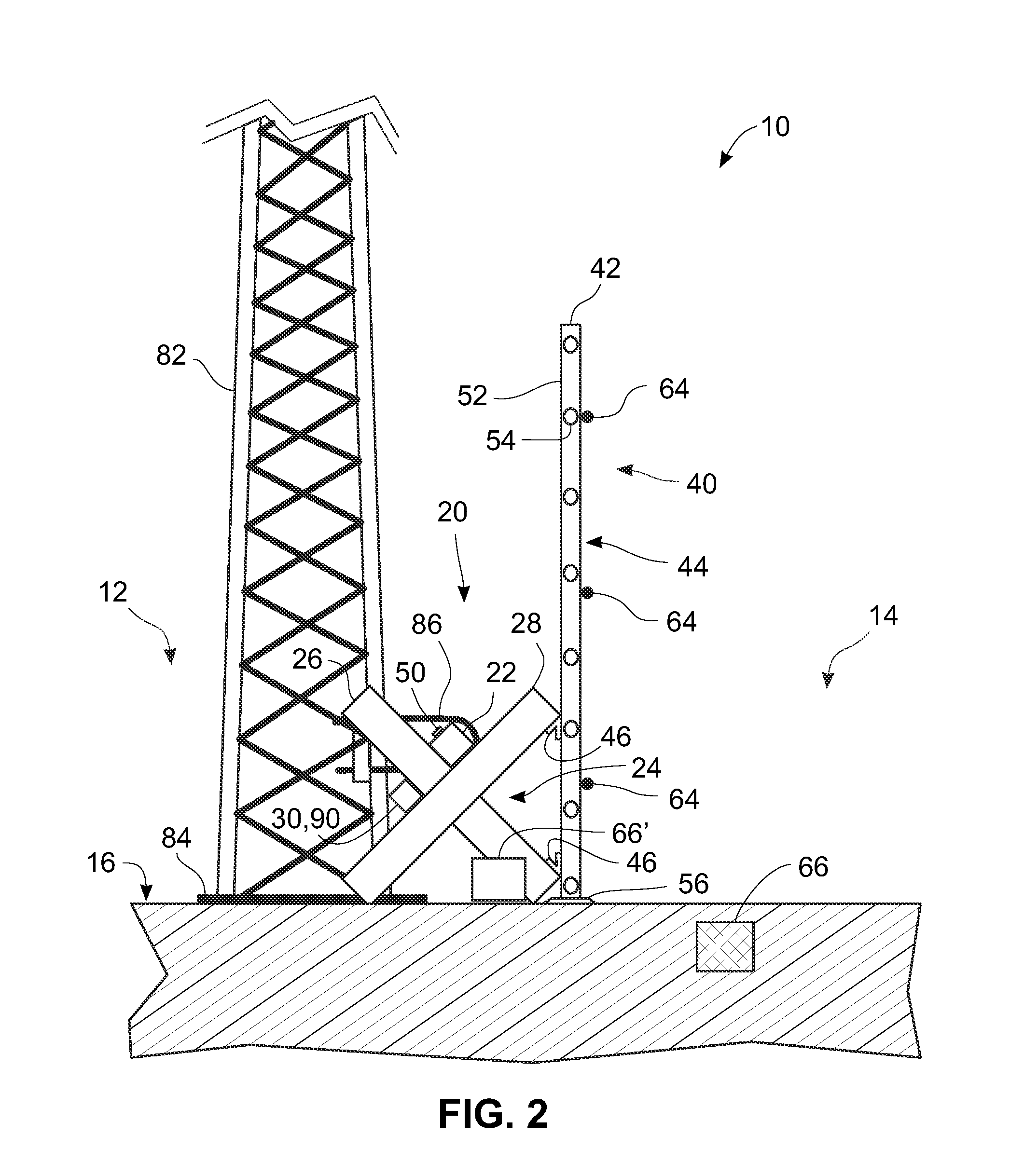Security barriers with automated reconnaissance
a security barrier and automated technology, applied in the field of security barriers with automated reconnaissance, can solve the problems of insufficient synergy and practicality of prior art combining security barriers with sensors, and achieve the effects of reducing false alarm rate, reducing cost per unit length, and improving probability of detecting and classifying attempts at intrusion
- Summary
- Abstract
- Description
- Claims
- Application Information
AI Technical Summary
Benefits of technology
Problems solved by technology
Method used
Image
Examples
embodiment 10
[0068]FIG. 1 provides a reference for discussion regarding how some sensors are mounted to some structures in this and some other of the possible embodiments of the current invention(s). It is an aspect of the current invention(s) that at least some of the sensors should not be used solely as islands of disturbance detection. By that is meant that the present invention(s) make opportunistic use of collections of sensors, some of the same type and / or some of different types, in order to discriminate actual intrusion activities from causes of what could otherwise result in nuisance alarms or in false alarms. This is accomplished by employing sensor mounting structures that facilitate the ability of the sensors to respond to disturbances to which they might not otherwise respond. For example, if a cable sensor 64 was on a fence not attached mechanically to cross-bucks 24 holding a primary beam 22, then it most probably would not respond to disturbances made to the primary beam 22. Simi...
embodiment 300
[0079]FIG. 11 shows a pictorial depiction of a compact embodiment 300′ of a sensor transducer or sensor subsystem 310′. What is shown is a sensor module 310′ with a portion of its communications cable or other connection medium 340′ extending out of a side of the module 310′. The medium 340′ could represent a wireless link to a remote receiver or transceiver.
[0080]FIG. 12 shows one representation of one embodiment of one form of learning machine that might be practiced in implementing some of the embodiments of the current invention(s). Such learning machines would be processed by any of the computers 200 or 300, or any of the computing engines 210 or 210′, shown in FIG. 9, which is to say they could be processed by any of the computers 160, 160′, 170, and / or 180 shown in FIG. 8. What is shown in FIG. 12 is an example of an artificial neural network 400) having a particular structure, but other structures would also fall within the scope of the current invention(s) and claims. These...
embodiment 500
[0081]FIG. 13 shows a two-step process embodiment 500 of simulating neuron activation in each layer of an artificial neural network. In the first step 510 and for the second layer, variable “z(2)” is a vector of values calculated as the product of the transpose of a matrix θ(1) of parameter values for the first layer and a vector “x” of input values. The symbol “T” in the figure stands for the transpose operator. In the first step 510 and for the subsequent j'th layers, variable)“z(j)” is a vector of values calculated as the product of the transpose of a matrix θ(j-1) of parameter values for the “j−1”th layer and a vector “a(j-1)” of activation values of that preceding layer (i.e. of the “j−1”th layer). In the second step 520, activation values a(z) are calculated as a function of z using the logistic function g(z) which is also called a sigmoid function. One skilled in the art of artificial neural networks will recognize that other choices exist for activation functions without dev...
PUM
 Login to View More
Login to View More Abstract
Description
Claims
Application Information
 Login to View More
Login to View More - R&D
- Intellectual Property
- Life Sciences
- Materials
- Tech Scout
- Unparalleled Data Quality
- Higher Quality Content
- 60% Fewer Hallucinations
Browse by: Latest US Patents, China's latest patents, Technical Efficacy Thesaurus, Application Domain, Technology Topic, Popular Technical Reports.
© 2025 PatSnap. All rights reserved.Legal|Privacy policy|Modern Slavery Act Transparency Statement|Sitemap|About US| Contact US: help@patsnap.com



